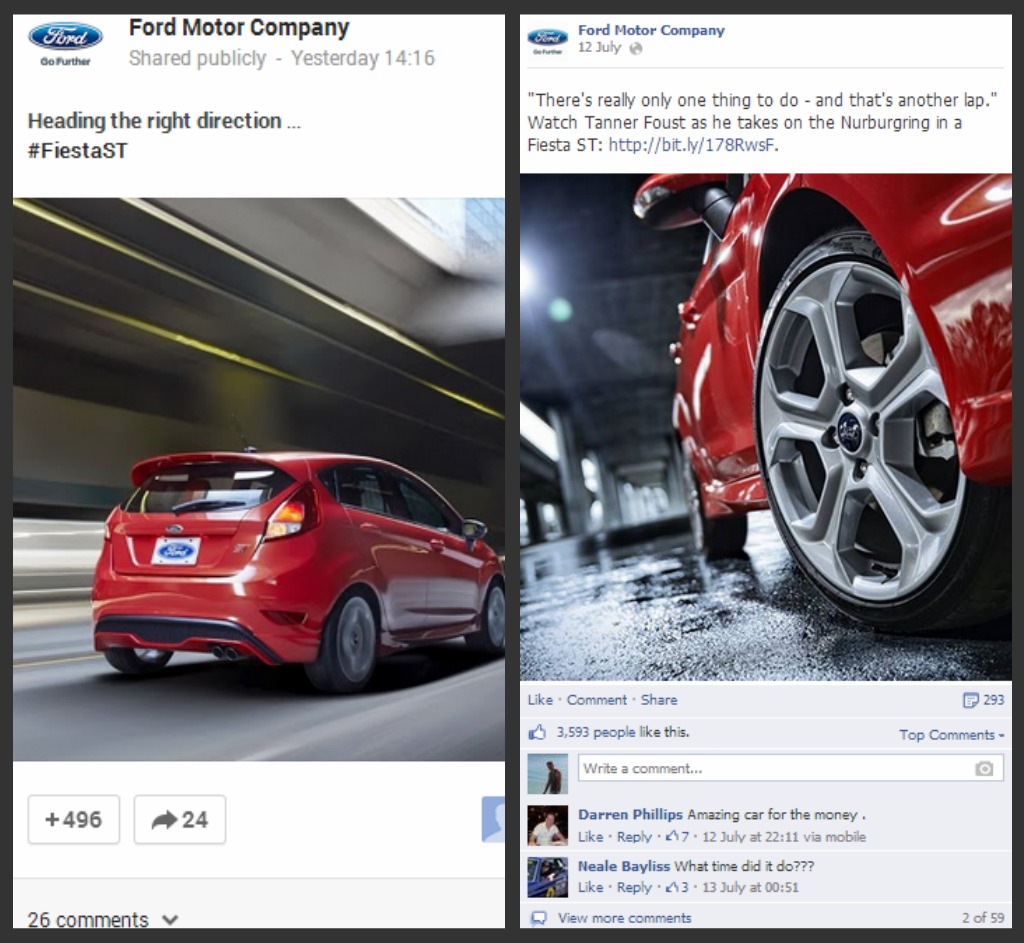
Now, let me address the elephant in the room here. A post promoting the virtues of Google+ is evidently going to do a lot better on Google+ than on the platforms it’s dismissing. That, and the post in question was also picked up by ex-Apple fanboy and web celebrity, Guy Kawasaki who works with Google. He’s such a big fan of Google plus, he’s even written a book about it. It’s probably safe to say that Kawasaki’s legion of followers are big G+ fans too and went on to share this little Google horn-blower of an article a few times.
What about engagement rates?
That being said, I always question my own practices when news like this comes up. Historically for me Google+ has been a big room “full” of very quiet users who mysteriously don’t seem to interact much, compared to Facebook. So, I immediately thought, have I been doing something wrong? Let’s check the numbers to get some perspective.
One of the biggest factors which could have influenced the amount of engagement we have per post on Google+ vs Facebook is the number of followers we have on each channel. I use Facebook as a comparison purely because it’s G+’s main competition and functions in a much more similar way than Twitter does. On Google+ we have around 30,000 followers whereas on Facebook we have around 115,000. So, working out an engagement rate per 100 fans (% rate) for both platforms on an identical piece of content should be a good indication of whether or not the platform is “busy”.
As an example I used an informative piece about South Africans’ experience of the mile-high club, featuring an image of a heart-shaped cloud and a plane. The posts were pretty much identical on FB and G+. We see an engagement rate of about 0.01% on G+ and around 0.16% on Facebook for that post; that’s 16 times better engagement from Facebook. Add to this the fact that a page’s most recent Google+ post appears in the top right of search results for that brand, one would expect G+ posts to garner plenty more +1’s than they do.
That’s only one brand, what about the rest?
So maybe that’s just us. Maybe the rest of the popular pages on G+ are much more active? Let’s do some digging.
Unfortunately the number of people who have Guy Kawasaki in their circles on G+ is not available, what is available are the numbers on many corporate pages. Let’s take Ford Motor Company as an example. On Google+ they have a whopping 2.4 million followers, on Facebook they have a more modest 1.9 million likes. A quick caveat here: G+ adds popular pages to prepopulated recommendation lists which it presents to new users to help spice-up their feeds with a single click and Ford was one of their original company page partners.
Ford’s latest post about the Fiesta ST on G+ got 496 +1’s, 24 shares and 26 comments, 546 total engagements; it’s a rather typical post from the motoring giant. Their post about the Fiesta ST on Facebook, with it’s smaller fan-base, with an arguably less engaging image got 3593 likes, 293 shares and 59 comments, 3945 total engagements. That’s 0.02% of total followers engaged on G+ and 0.20% of total followers on Facebook, the latter saw a 10 times higher engagement rate.
The thing is with Ford, is this isn’t the case with just one of the posts, it’s with pretty much all of them with only one recently breaching the 600 +1 mark in July. In contrast, on Facebook only one of their posts had below 3000 likes. The difference is staggering. And the engagement rates are strikingly similar for the other brands I checked like KLM, Mashable and Samsung.
Google+ is very active? Compared to what, I ask.
UPDATE: (Updated 22 July 2013) Social infrastructure technology company Gigya, published a report stating that G+ accounts for only 2% of total social sharing on the web. And with their stellar list of clients like National Geographic, Microsoft, Nike, Walmart, Dell and RedBull, to name but a few, they should know!







